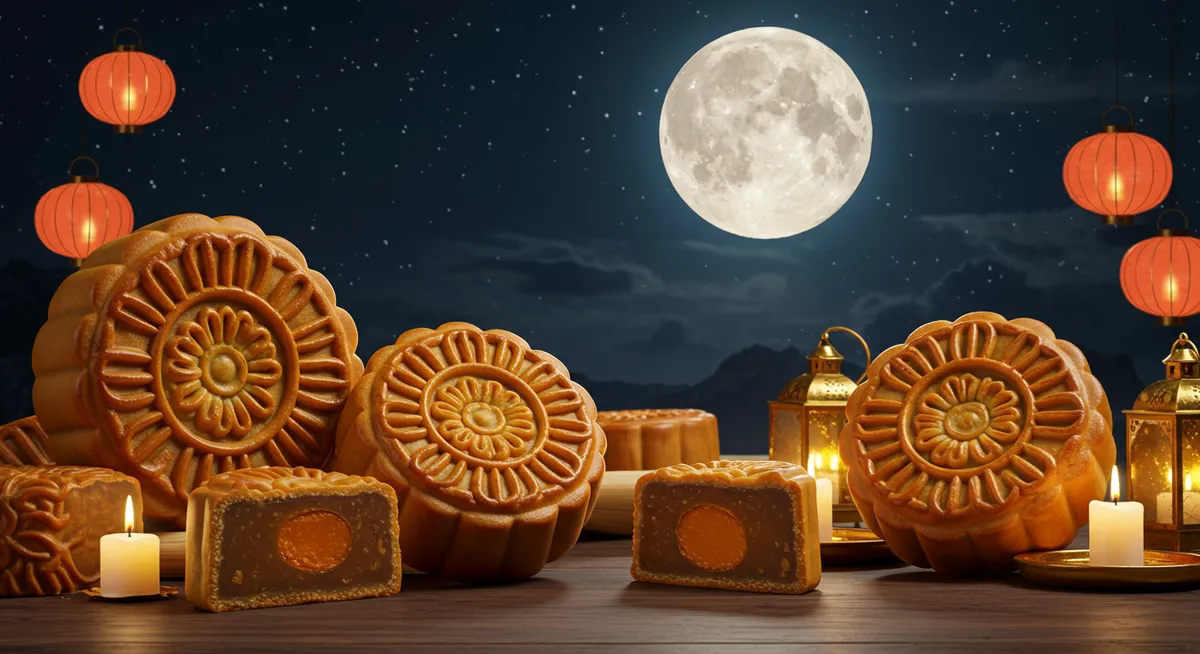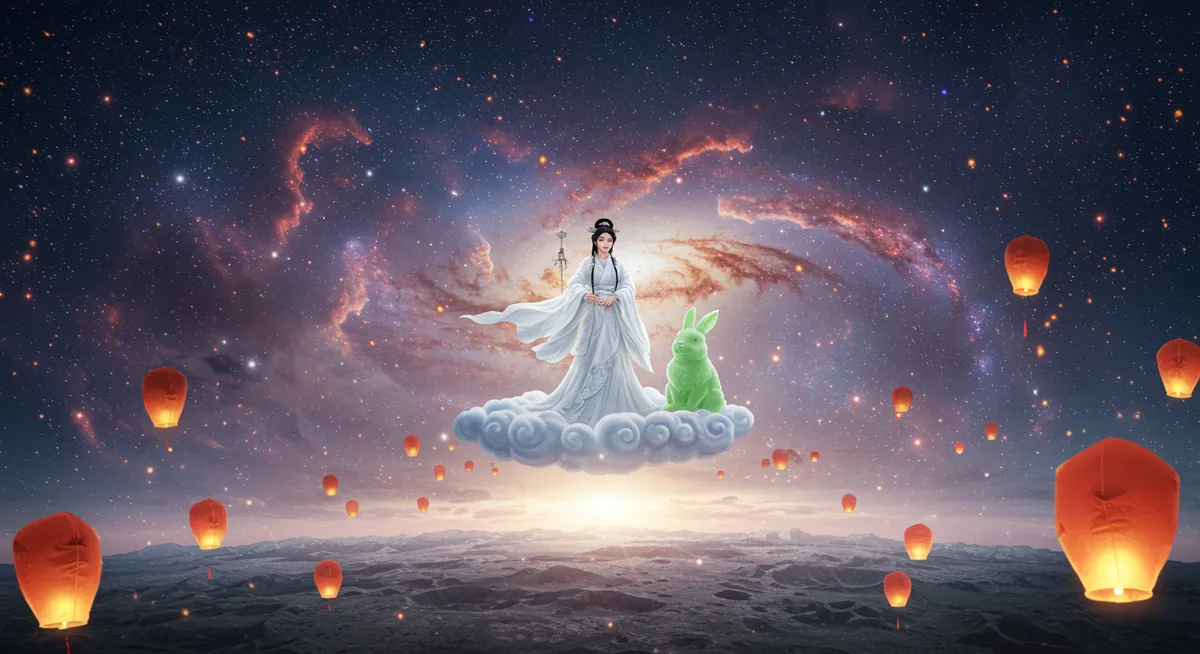Mid-Autumn Festival Guide | East Asia's Mooncake and Lantern Celebration

Mid-Autumn Festival: East Asia's Celebration of Harvest, Moon, and Family Reunion
When the full harvest moon rises in autumn's night sky, families across East Asia gather to celebrate one of the region's most significant cultural traditions—the Mid-Autumn Festival. Also known as the Moon Festival or Mooncake Festival, this centuries-old celebration combines lunar worship, harvest thanksgiving, and family reunion through a tapestry of rich customs centered around mooncakes, lanterns, and moongazing. Occurring on the 15th day of the eighth lunar month (typically September or early October), the festival has evolved from ancient imperial moon worship ceremonies into a beloved cultural touchstone that continues to adapt while preserving its essential character. This guide explores the historical origins, cultural significance, and diverse regional expressions of East Asia's enchanting Mid-Autumn celebrations.

The Cultural Significance of Mid-Autumn Festival
Beyond its beautiful customs, the festival embodies several profound cultural values:
- Family Reunion: The round moon symbolizes completeness and reunion, making this a prime time for families to gather
- Agricultural Heritage: Originally a harvest celebration timed with the autumn full moon
- Celestial Veneration: Ancient traditions of moon worship and astronomical observation
- Cultural Continuity: Connecting modern East Asian societies with their historical roots
- Cyclical Time: The lunar calendar marking seasonal transitions and natural rhythms
Historical Origins and Mythology
The festival emerged from multiple historical and mythological sources:
Ancient Moon Worship
The earliest foundations trace back to ancient lunar veneration:
- Zhou Dynasty Origins: Records from as early as 3,000 years ago describe autumn moon worship ceremonies
- Imperial Rituals: Tang Dynasty emperors formalized moon-viewing ceremonies around the 8th century CE
- Agricultural Timing: Celebration coincided with the harvest season in traditional farming communities
- Folk Traditions: Popular customs gradually merged with official celebrations
The Legend of Chang'e
The most beloved Mid-Autumn myth tells the story of the moon goddess:
- The Immortality Elixir: Archer Hou Yi shoots down nine extra suns scorching the earth and is rewarded with an elixir of immortality
- Chang'e's Sacrifice: His wife Chang'e drinks the elixir to prevent it from falling into wrong hands
- Flight to the Moon: She floats to the moon where she lives eternally, separated from her husband
- Jade Rabbit Companion: Chang'e's companion on the moon, the Jade Rabbit, pounds medicine with a mortar and pestle
- Annual Reunion: Hou Yi makes offerings to the moon, hoping to glimpse his beloved wife
Mooncake Rebellion Connection
A popular historical account links mooncakes to Chinese political resistance:
- Yuan Dynasty Uprising: Chinese rebels allegedly used mooncakes to hide secret messages organizing revolt against Mongol rulers in the 14th century
- Hidden Messages: Notes embedded in mooncakes instructed people to rise up on the 15th day of the eighth month
- Cultural Significance: Whether historically accurate or not, the story connects the festival to themes of liberation and cultural identity

Key Festival Traditions
The Mid-Autumn Festival is celebrated through several distinctive customs:
Mooncakes
These iconic pastries are the festival's defining food:
- Symbolic Form: Round shape represents completeness and reunion, mirroring the full moon
- Traditional Fillings: Lotus seed paste, red bean paste, and salted egg yolks (symbolizing the moon)
- Regional Variations: Distinctive styles from different regions with characteristic crusts and fillings
- Modern Innovations: Contemporary flavors like chocolate, ice cream, and fruit have expanded the tradition
- Gifting Culture: Elaborately packaged mooncakes are given as presents to family, friends, and business contacts
Lanterns
Illuminating the autumn night with colorful light:
- Traditional Significance: Light guiding family members home and illuminating nighttime festivities
- Variety of Forms: From simple paper lanterns to elaborate designs representing animals, flowers, and characters
- Children's Delight: Special lanterns made for children, often including riddles and puzzles
- Community Displays: Public parks and gardens feature spectacular lantern exhibitions and competitions
- Floating Lanterns: In some regions, lanterns are set afloat on rivers and lakes
Family Reunion and Moon Viewing
The heart of the festival is coming together:
- Reunion Dinners: Families gather for special meals featuring seasonal foods
- Outdoor Celebrations: Setting up tables outside to enjoy food while admiring the full moon
- Moon Offerings: Traditional arrangements of fruits, incense, and mooncakes presented as offerings
- Poetry and Songs: Recitation of classical poems about the moon and autumn
- Ancestral Veneration: Honoring family ancestors during the gathering with special offerings
Regional Expressions
While sharing common elements, the festival takes distinctive forms across East and Southeast Asia:
China
As the festival's cultural heartland, China features diverse regional traditions:
- Beijing: Elaborate lantern displays in imperial parks and moon-viewing pavilions
- Guangdong: Famous for lotus seed paste mooncakes with multiple egg yolks
- Suzhou: The Wu cultural region features distinctive "Five Kernel" mooncakes and water lanterns
- Chaozhou: Unique mooncakes with flaky, crisp crusts and distinctive fillings
- Rural Traditions: Agricultural communities maintain harvest-focused customs with crop offerings
Hong Kong and Taiwan
Island variations maintain traditional elements with modern adaptations:
- Fire Dragon Dance: Hong Kong's Tai Hang district features a spectacular dragon made of burning incense sticks
- Lantern Wonderland: Victoria Park transforms with elaborate themed lantern displays
- Taipei's Celebrations: Dajia Riverside Park hosts major festivities with performances and food stalls
- Pingxi Sky Lanterns: Taiwan's tradition of releasing sky lanterns with wishes written on them
- Gourmet Innovations: Both regions are known for creative, luxury mooncake variations

Vietnam
Vietnam's Tết Trung Thu emphasizes children's celebrations:
- Children's Festival: Special focus on young people with processions and activities
- Lion Dances: Elaborate performances visiting homes and businesses
- Star Lanterns: Distinctive star-shaped lanterns unique to Vietnamese tradition
- Bánh Nướng and Bánh Dẻo: Vietnamese mooncakes with local fillings like mung beans
- Mask Making: Traditional paper masks for children's activities
Korea
Korea's Chuseok combines harvest celebration with ancestral veneration:
- Ancestral Ceremonies: Formal charye rituals honoring family ancestors
- Songpyeon: Crescent-shaped rice cakes replace mooncakes as the traditional food
- Family Graves: Visits to ancestral tombs for cleaning and offerings
- Traditional Games: Folk activities like wrestling (Ssireum) and tug-of-war
- Modern National Holiday: Major travel period with family reunions across the country
Japan
Japan's Tsukimi features distinctive moon-viewing traditions:
- Viewing Platforms: Special areas arranged for optimal moon appreciation
- Seasonal Foods: Tsukimi dango (rice dumplings) and seasonal produce as offerings
- Pampas Grass: Decorative arrangements symbolizing the harvest
- Rabbit Motifs: Japan's moon rabbit folklore featured in decorations
- Poetic Tradition: Composing moon-inspired poetry during viewings
Modern Celebrations
Contemporary Mid-Autumn Festival practices blend tradition with innovation:
Urban Adaptations
Modern city life has transformed some aspects of the festival:
- Public Light Shows: Cities create spectacular projection displays on landmarks
- Rooftop Gatherings: Apartment dwellers adapt moon viewing to urban environments
- Park Festivals: Community events in public spaces featuring performances and activities
- Restaurant Specials: Special menus and mooncake-themed desserts at dining establishments
Evolving Mooncake Traditions
The iconic festival food continues to develop:
- Health-Conscious Options: Low-sugar, vegetarian, and organic variations
- Fusion Flavors: Global cuisine influences creating unexpected combinations
- Luxury Market: Premium mooncakes in elaborate packaging as status symbols
- Artisanal Revival: Handcrafted traditional styles making a comeback
- Environmental Concerns: Growing awareness about excessive packaging waste
Tourism and Cultural Showcase
The festival has become a major cultural attraction:
- International Appeal: Growing interest from global travelers in authentic festival experiences
- Cultural Tourism: Special events and tours designed for visitors
- Diaspora Connections: Overseas Chinese communities maintaining traditions worldwide
- Social Media Impact: Instagram-worthy lantern displays and mooncake unboxing trends
Planning your Mid-Autumn Festival experience?
The festival date varies annually according to the lunar calendar, typically falling in September or early October. Check exact dates before planning your trip.
For the most immersive experience, consider visiting Hong Kong's Victoria Park lantern displays, Taiwan's Pingxi sky lantern releases, or Singapore's Gardens by the Bay festival installations.
Explore Related Asian Seasonal Celebrations
If you're fascinated by the Mid-Autumn Festival, you might also enjoy these related cultural celebrations across Asia:
Lunar New Year
East Asia's most important festival with family reunions, red envelopes, and traditional foods.
Dragon Boat Festival
Early summer festival with exciting boat races and sticky rice dumplings (zongzi).
Diwali
India's festival of lights sharing themes of light, family gathering, and seasonal transition.
Dongzhi Festival
Winter solstice celebration with tangyuan dumplings and family gatherings.
Ghost Festival
Another important lunar calendar celebration honoring ancestors and departed spirits.
Hanami
Japan's cherry blossom viewing celebration marking spring's arrival.
Asian seasonal festivals mark the rhythm of the traditional calendar year. Like the Mid-Autumn Festival, Lunar New Year emphasizes family reunion, while Ghost Festival reflects the importance of ancestral connections. Each celebration offers a window into how traditional societies marked time through celestial observations and seasonal changes.